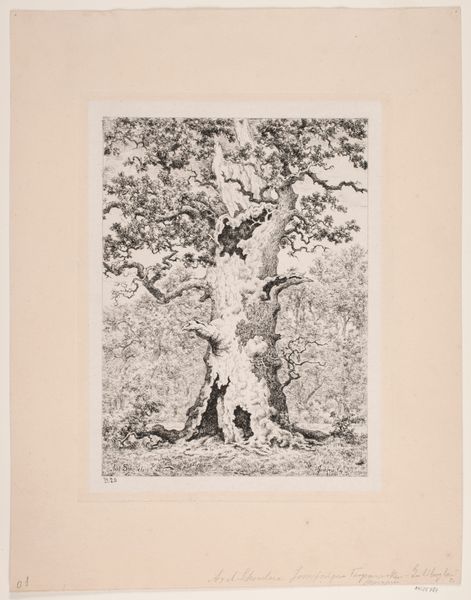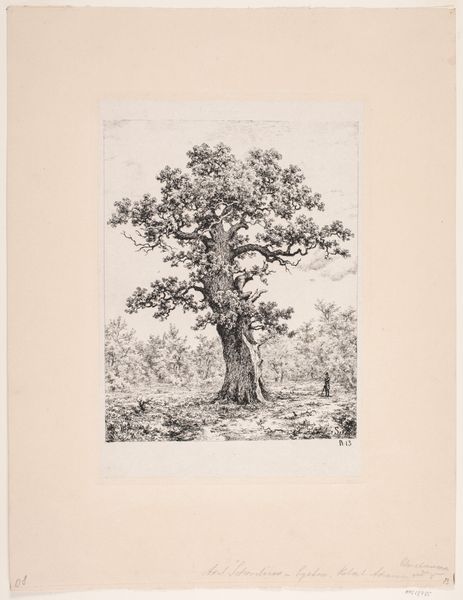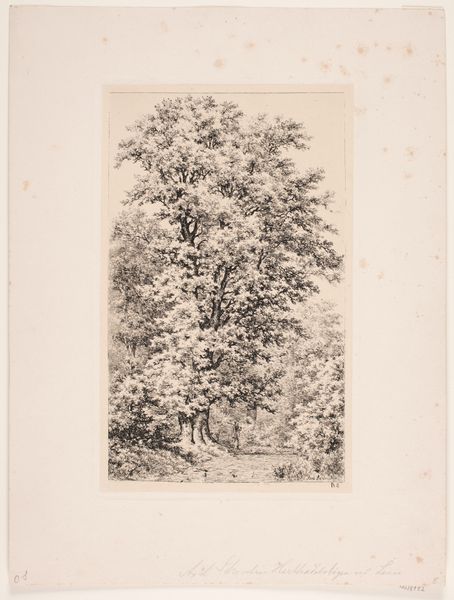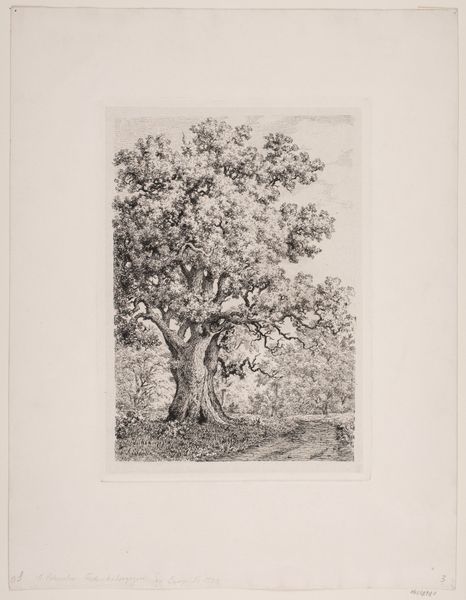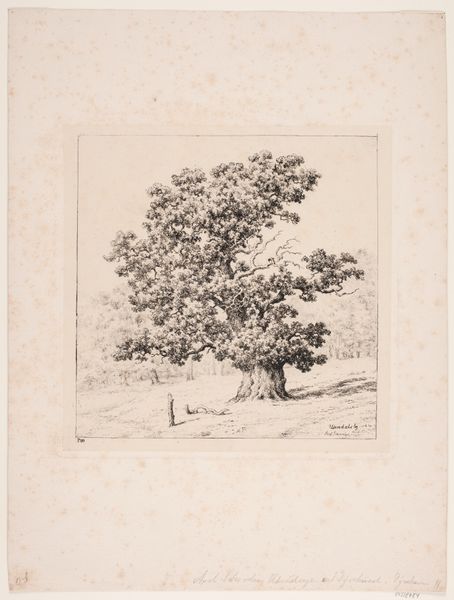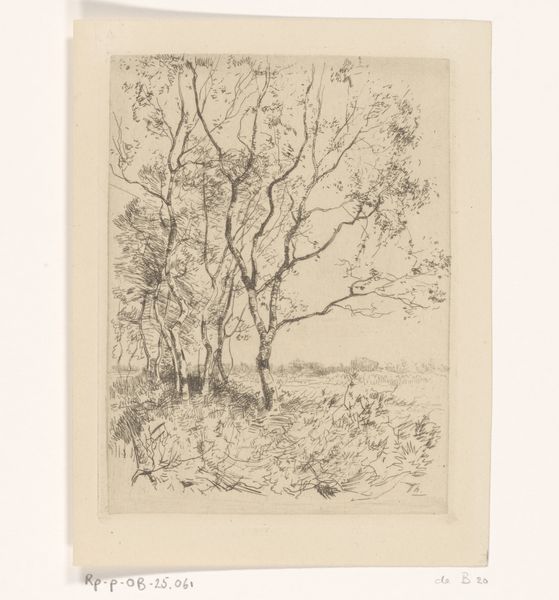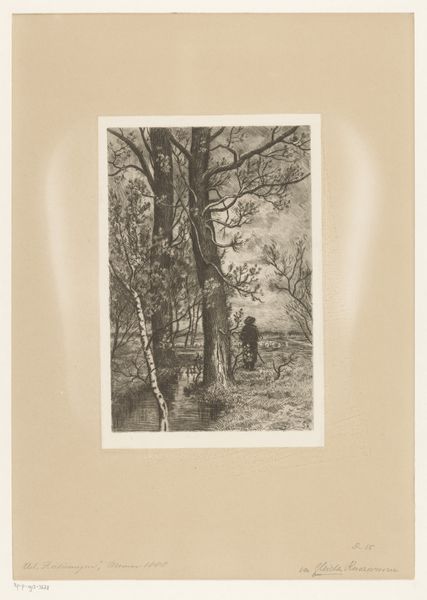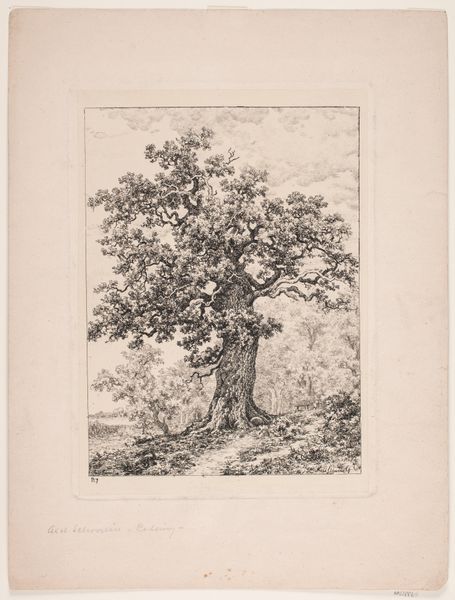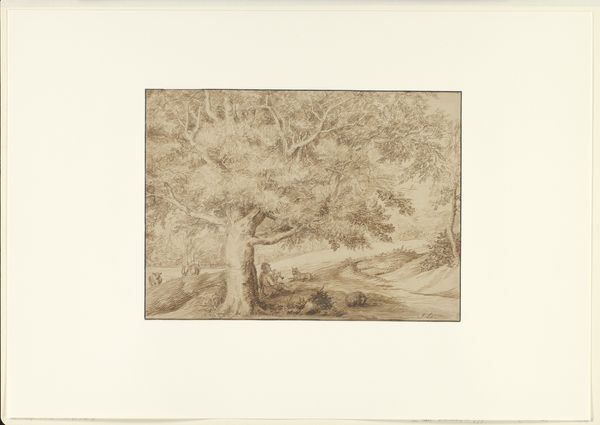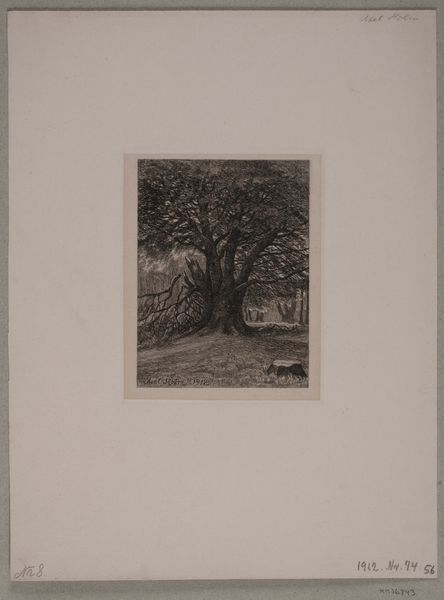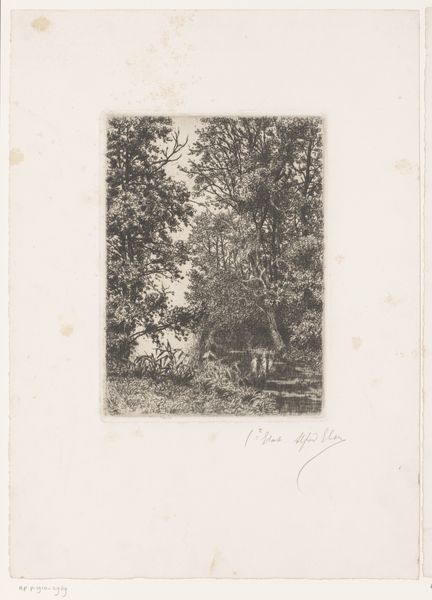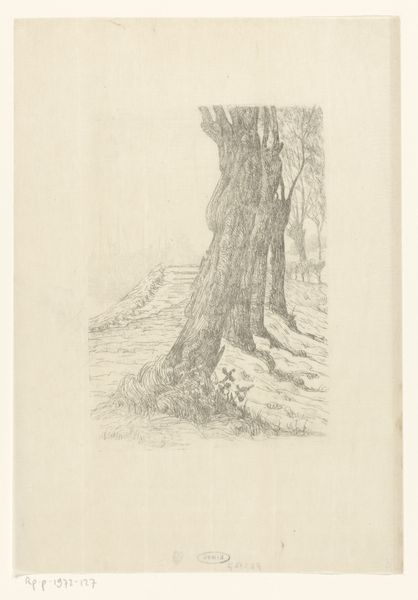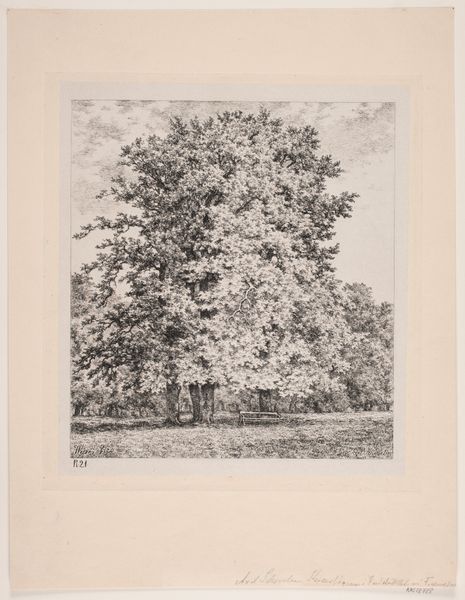
Dimensions: 250 mm (height) x 175 mm (width) (plademaal)
Curator: The sheer age and endurance are palpable in this Danish landscape print, 'Bøgen i nærheden af parnasset ved Sorø sø', which roughly translates to 'The Beech near Parnasset by Sorø Lake.' It’s an engraving, dating back to 1887, crafted by Axel Schovelin. What do you make of it? Editor: The immediate impression is one of serene immensity. The solitary tree, rendered in stark black and white, completely dominates the composition. Its presence is both imposing and calming. The texture of the bark, too, is incredibly detailed. Curator: The realism definitely hints at Romanticism's interest in the sublimity of nature, but there's something beyond that, a symbolical weight. Trees, especially large, old ones like this beech, often symbolize strength, wisdom, and continuity. Editor: Do you see continuity here? I see a moment frozen in time. Look at how the artist uses line. There’s a crispness, almost a starkness that removes it from pure Romanticism. There is definitely the element of realism involved in capturing that light. Curator: True, and consider also the social function of landscape art in 19th century Denmark. This was a time of national romanticism; the landscape became a symbol of national identity, deeply entwined with collective memory. The Sorø lake itself may hold certain local connotations, or legends. Editor: So, you're suggesting the artist is not just depicting a tree, but evoking a sense of Danish heritage and belonging through landscape. The 'Parnasset' reference in the title then gives us access to its historical and socio-political location, doesn’t it? Curator: Precisely! It could allude to a cultural or intellectual gathering spot, adding a layer of significance to this otherwise tranquil scene. I think we, as observers today, feel that the visual rhythm and detailed symbolism combine to touch on an atemporal psychological significance within the human need for shelter and a sense of belonging. Editor: Indeed. Even though the style and location ground the image in the late nineteenth century, there's something eternally relatable about our impulse to connect with the grand scope of nature. Curator: Well, regardless, I will certainly feel that I have understood our relationship to our world and how people perceive such relationships through a shared consciousness, at least as far back as 1887! Editor: Agreed. It is hard to be unimpressed when one considers the skill of Schovelin and its appeal.
Comments
No comments
Be the first to comment and join the conversation on the ultimate creative platform.
